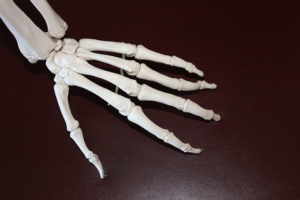Rheumatoid arthritis in the hip: Symptoms and management – Medical News Today
Rheumatoid arthritis (RA) is a chronic, progressive autoimmune disease that can affect the hip joint. It can cause pain, stiffness, and restricted movement in one or both hips.
A person may experience hip pain on both sides of the body.
In this article, we look at h…….

Rheumatoid arthritis (RA) is a chronic, progressive autoimmune disease that can affect the hip joint. It can cause pain, stiffness, and restricted movement in one or both hips.
A person may experience hip pain on both sides of the body.
In this article, we look at how RA affects the hip. We also discuss its causes and symptoms and outline treatment options for managing the condition.
RA is a type of inflammatory arthritis, which occurs when an overactive immune system attacks healthy tissue in the body.
The hip joint consists of a ball and socket. The acetabulum, which is part of the pelvis bone, forms the socket. The femoral head, which is the top part of the thighbone, forms the ball.
A tissue called articular cartilage covers the surfaces of the ball and socket. This cartilage provides a smooth, slippery surface to allow the bones to move easily.
The hip joint also has a thin, protective covering called synovium. The synovium releases a lubricating fluid that allows better movement.
In people with RA, the synovium does not function properly. It becomes thicker and swollen and produces substances that attack the articular cartilage surrounding the hip joint.
RA usually affects smaller joints in the body to start with, such as in the hands and feet. As the condition progresses, it can spread to one or both hips.
According to the American Academy of Orthopaedic Surgeons (AAOS), people may experience RA symptoms in both hips. This is because RA typically affects the same joint on both sides of the body.
Symptoms of RA in the hip include:
- pain, stiffness, or swelling in one or both hips
- pain that may feel worse in the morning or after periods of resting or sitting
- pain that may lessen with movement and increase with vigorous physical activity
- severe joint pain that causes limping or makes walking difficult
Symptoms of RA may come and go. The Arthritis Foundation (AF) notes that joint pain or stiffness that lasts for 6 weeks or more and joint stiffness in the morning that lasts for 30 minutes or more may be a sign of RA.
Can RA in the hip affect other areas?
RA can also affect other areas of the body. People may experience dull, aching pain in the:
- groin
- buttocks
- outer thigh
- knee
People can also experience more general symptoms, including:
Vs. osteoarthritis in the hip
Osteoarthritis (OA) is another type of arthritis that can develop in the hip.
<…….
Source: https://www.medicalnewstoday.com/articles/rheumatoid-arthritis-in-the-hip







